-
 Bitcoin
Bitcoin $106,754.6083
1.33% -
 Ethereum
Ethereum $2,625.8249
3.80% -
 Tether USDt
Tether USDt $1.0001
-0.03% -
 XRP
XRP $2.1891
1.67% -
 BNB
BNB $654.5220
0.66% -
 Solana
Solana $156.9428
7.28% -
 USDC
USDC $0.9998
0.00% -
 Dogecoin
Dogecoin $0.1780
1.14% -
 TRON
TRON $0.2706
-0.16% -
 Cardano
Cardano $0.6470
2.77% -
 Hyperliquid
Hyperliquid $44.6467
10.24% -
 Sui
Sui $3.1128
3.86% -
 Bitcoin Cash
Bitcoin Cash $455.7646
3.00% -
 Chainlink
Chainlink $13.6858
4.08% -
 UNUS SED LEO
UNUS SED LEO $9.2682
0.21% -
 Avalanche
Avalanche $19.7433
3.79% -
 Stellar
Stellar $0.2616
1.64% -
 Toncoin
Toncoin $3.0222
2.19% -
 Shiba Inu
Shiba Inu $0.0...01220
1.49% -
 Hedera
Hedera $0.1580
2.75% -
 Litecoin
Litecoin $87.4964
2.29% -
 Polkadot
Polkadot $3.8958
3.05% -
 Ethena USDe
Ethena USDe $1.0000
-0.04% -
 Monero
Monero $317.2263
0.26% -
 Bitget Token
Bitget Token $4.5985
1.68% -
 Dai
Dai $0.9999
0.00% -
 Pepe
Pepe $0.0...01140
2.44% -
 Uniswap
Uniswap $7.6065
5.29% -
 Pi
Pi $0.6042
-2.00% -
 Aave
Aave $289.6343
6.02%
How to judge the divergence of volume and price but no reversal signal?
Volume and price divergence without reversal often signals market consolidation, not trend change, urging traders to confirm with other indicators before acting.
Jun 17, 2025 at 12:28 am
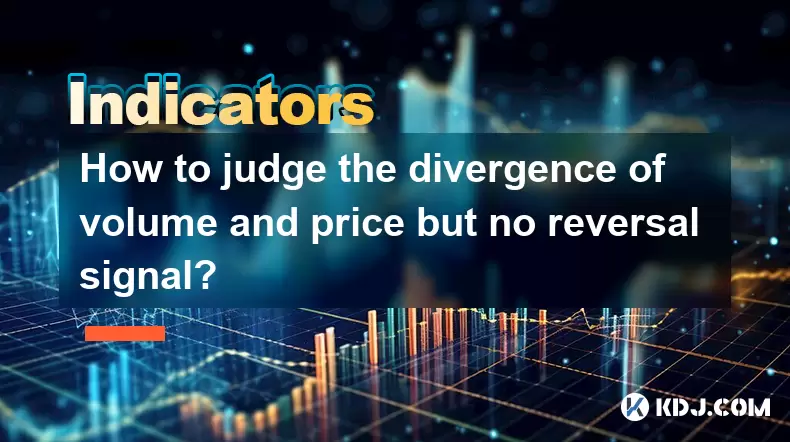
Understanding Volume and Price Divergence
In the world of cryptocurrency trading, volume and price are two key indicators that traders monitor closely. Divergence occurs when these two metrics move in opposite directions. For example, if the price of a cryptocurrency is rising but its volume is declining, this could signal weakening momentum. However, it's important to distinguish between divergence with reversal signals and divergence without reversal signals.
When there’s no clear reversal pattern accompanying the divergence, traders must avoid making hasty conclusions. This type of divergence may simply reflect market consolidation or temporary imbalance rather than a trend reversal.
Identifying Volume-Price Divergence Without Reversal
To determine whether divergence exists without a reversal signal, start by comparing the movement of price action and trading volume on your charting platform. Use tools like volume histograms and moving averages to visualize this relationship clearly.
- Look for discrepancies: If the price makes higher highs but volume makes lower highs, this suggests weakening buying pressure.
- Check candlestick patterns: Absence of strong reversal patterns like engulfing candles or doji formations indicates no immediate reversal.
- Use technical indicators: Tools such as RSI or MACD can help confirm whether momentum aligns with price movements or contradicts them without signaling a reversal.
This form of divergence often appears during sideways markets or early stages of trend development.
Filtering Out False Signals
Not all divergences lead to reversals. In fact, many are false alarms. To avoid misinterpreting volume-price divergence:
- Analyze multiple timeframes: A divergence on a 1-hour chart might not appear on a 4-hour or daily chart, suggesting noise rather than a meaningful shift.
- Compare with order book data: Observe bid-ask spreads and liquidity levels to understand whether large orders are influencing volume without actual price change.
- Incorporate volatility measures: High volatility can create misleading divergences. Using Bollinger Bands or ATR (Average True Range) helps contextualize the readings.
By filtering out short-term noise, you can better assess whether divergence is significant or just a normal fluctuation.
Practical Steps to Confirm No Reversal Signal
When divergence appears without a reversal, it’s essential to verify through additional analysis. Here’s how:
- Overlay moving averages: If both 50-day and 200-day moving averages remain aligned with the current trend, it suggests continuation rather than reversal.
- Watch support and resistance zones: If price remains within a well-established range, divergence alone isn’t enough to justify a directional trade.
- Monitor on-chain metrics: Tools like Glassnode or CryptoQuant can show whether accumulation or distribution is happening beneath the surface, which may or may not align with price-volume divergence.
These steps allow traders to stay objective and prevent emotional decisions based solely on volume and price mismatch.
Using Volume-Price Divergence in Risk Management
Even when no reversal signal is present, divergence can serve as a valuable risk management tool. It highlights potential weakness or strength in the current trend, helping traders adjust their positions accordingly.
- Adjust stop-loss levels: If divergence suggests weakening momentum, tighten stops to protect profits even if the trend continues.
- Reduce position size: Lower exposure in anticipation of possible consolidation or pullback, especially after extended moves.
- Set alerts: Use trading platforms to set alerts when volume picks up again or when key support/resistance levels are approached, indicating renewed strength or breakdown.
This approach ensures that divergence informs strategy without dictating trades solely based on its presence.
Frequently Asked Questions
Q: Can volume and price divergence occur in a bullish trend without signaling a reversal?
Yes, especially during healthy pullbacks in a strong uptrend. Lower volume during minor corrections doesn’t necessarily indicate a trend change—it can reflect profit-taking or consolidation before resuming the original direction.
Q: How reliable is volume in low-cap cryptocurrencies when analyzing divergence?
Volume in low-cap coins can be highly volatile and manipulated. It’s less reliable compared to high-cap assets like Bitcoin or Ethereum. Always cross-check with other metrics and consider using weighted volume or adjusted volume indicators.
Q: Should I ignore divergence entirely if no reversal pattern appears?
No, you shouldn’t ignore it, but treat it as a cautionary signal rather than a definitive one. Monitor the asset more closely and wait for confirmation from other sources before acting.
Q: Are there specific charting tools designed to detect divergence without reversal?
Some advanced platforms like TradingView offer built-in divergence scanners. Additionally, custom scripts or third-party plugins can help identify divergence patterns while excluding reversal signals based on user-defined criteria.
Disclaimer:info@kdj.com
The information provided is not trading advice. kdj.com does not assume any responsibility for any investments made based on the information provided in this article. Cryptocurrencies are highly volatile and it is highly recommended that you invest with caution after thorough research!
If you believe that the content used on this website infringes your copyright, please contact us immediately (info@kdj.com) and we will delete it promptly.
- 2025-W Uncirculated American Gold Eagle and Dr. Vera Rubin Quarter Mark New Products
- 2025-06-13 06:25:13
- Ruvi AI (RVU) Leverages Blockchain and Artificial Intelligence to Disrupt Marketing, Entertainment, and Finance
- 2025-06-13 07:05:12
- H100 Group AB Raises 101 Million SEK (Approximately $10.6 Million) to Bolster Bitcoin Reserves
- 2025-06-13 06:25:13
- Galaxy Digital CEO Mike Novogratz Says Bitcoin Will Replace Gold and Go to $1,000,000
- 2025-06-13 06:45:13
- Trust Wallet Token (TWT) Price Drops 5.7% as RWA Integration Plans Ignite Excitement
- 2025-06-13 06:45:13
- Ethereum (ETH) Is in the Second Phase of a Three-Stage Market Cycle
- 2025-06-13 07:25:13
Related knowledge
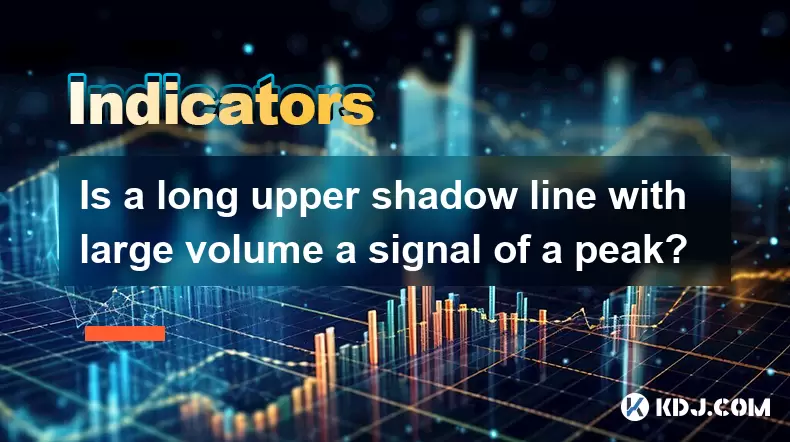
Is a long upper shadow line with large volume a signal of a peak?
Jun 17,2025 at 05:07am
Understanding the Long Upper Shadow LineA long upper shadow line, often referred to as a shooting star or inverted hammer depending on its location in a chart, is a candlestick pattern that indicates potential reversal from an uptrend. This pattern forms when prices rise significantly during the trading period but then fall back to close near the openin...

How to confirm the effectiveness of the average price line support in the time-sharing chart?
Jun 17,2025 at 12:56am
Understanding the Time-Sharing Chart and Its RelevanceIn cryptocurrency trading, time-sharing charts play a crucial role in analyzing short-term price movements. These charts typically display price fluctuations over a specific period, often ranging from minutes to hours. Traders rely on them to make quick decisions based on real-time data. The average ...
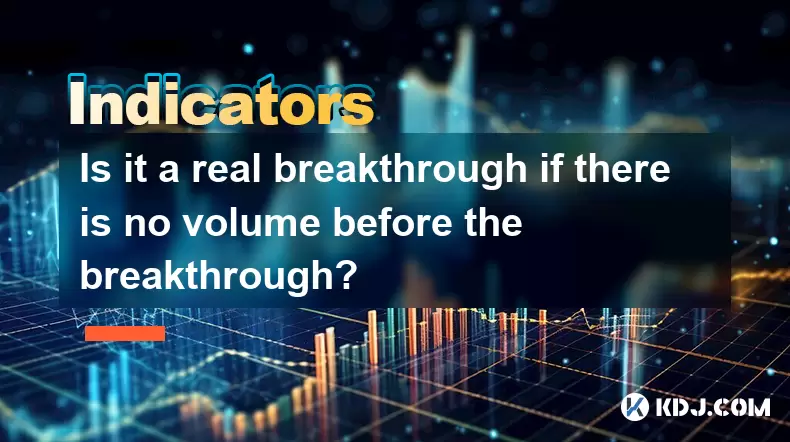
Is it a real breakthrough if there is no volume before the breakthrough?
Jun 17,2025 at 08:03am
Understanding the Concept of a Breakthrough in Cryptocurrency TradingIn cryptocurrency trading, a breakthrough typically refers to a price movement that surpasses a key resistance or support level. Traders often look for such events as potential signals for trend continuation or reversal. However, a crucial factor that determines the strength and reliab...

What does it mean when the momentum indicator breaks above the zero axis?
Jun 17,2025 at 12:43am
Understanding the Momentum IndicatorThe momentum indicator is a technical analysis tool used to measure the speed or velocity of price movements in cryptocurrency markets. It helps traders identify potential trend reversals, overbought or oversold conditions, and confirms existing trends. The indicator typically oscillates around a zero line, with value...
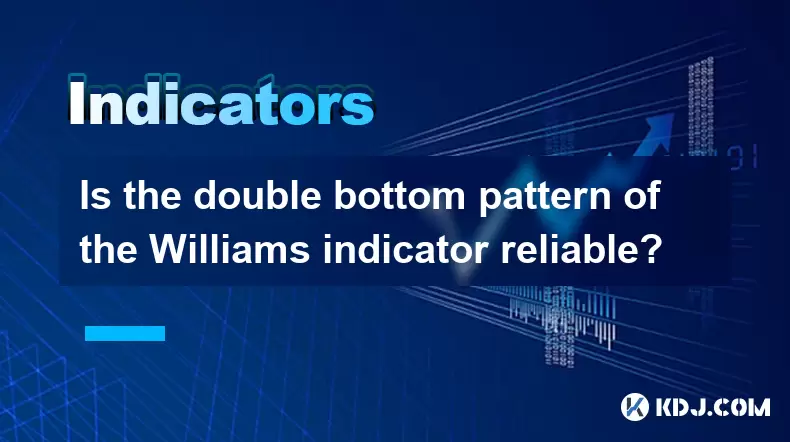
Is the double bottom pattern of the Williams indicator reliable?
Jun 17,2025 at 03:56am
Understanding the Williams Indicator and Its SignificanceThe Williams %R indicator, often referred to as Williams Percent Range, is a momentum oscillator used in technical analysis to identify overbought or oversold conditions in the market. Developed by Larry Williams, this indicator fluctuates between 0 and -100, with readings above -20 indicating ove...
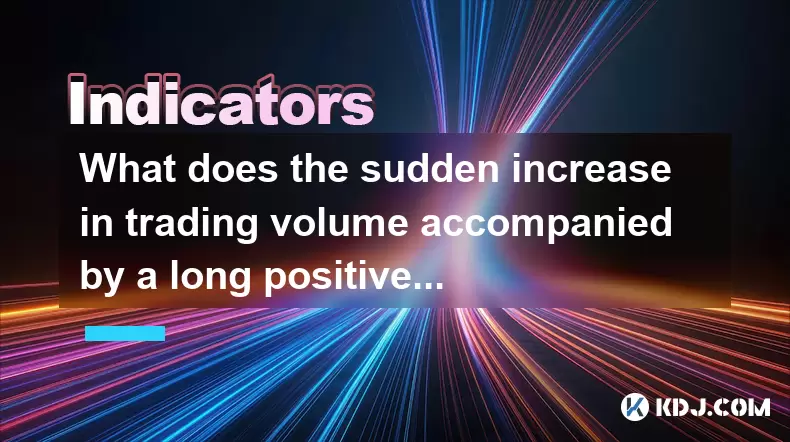
What does the sudden increase in trading volume accompanied by a long positive line mean?
Jun 17,2025 at 06:01am
Understanding the Sudden Surge in Trading VolumeWhen traders observe a sudden increase in trading volume, it typically signals a significant shift in market sentiment. This surge often indicates that more participants are entering or exiting positions, which could be due to news events, macroeconomic data releases, or institutional activity. High tradin...

Is a long upper shadow line with large volume a signal of a peak?
Jun 17,2025 at 05:07am
Understanding the Long Upper Shadow LineA long upper shadow line, often referred to as a shooting star or inverted hammer depending on its location in a chart, is a candlestick pattern that indicates potential reversal from an uptrend. This pattern forms when prices rise significantly during the trading period but then fall back to close near the openin...

How to confirm the effectiveness of the average price line support in the time-sharing chart?
Jun 17,2025 at 12:56am
Understanding the Time-Sharing Chart and Its RelevanceIn cryptocurrency trading, time-sharing charts play a crucial role in analyzing short-term price movements. These charts typically display price fluctuations over a specific period, often ranging from minutes to hours. Traders rely on them to make quick decisions based on real-time data. The average ...

Is it a real breakthrough if there is no volume before the breakthrough?
Jun 17,2025 at 08:03am
Understanding the Concept of a Breakthrough in Cryptocurrency TradingIn cryptocurrency trading, a breakthrough typically refers to a price movement that surpasses a key resistance or support level. Traders often look for such events as potential signals for trend continuation or reversal. However, a crucial factor that determines the strength and reliab...

What does it mean when the momentum indicator breaks above the zero axis?
Jun 17,2025 at 12:43am
Understanding the Momentum IndicatorThe momentum indicator is a technical analysis tool used to measure the speed or velocity of price movements in cryptocurrency markets. It helps traders identify potential trend reversals, overbought or oversold conditions, and confirms existing trends. The indicator typically oscillates around a zero line, with value...

Is the double bottom pattern of the Williams indicator reliable?
Jun 17,2025 at 03:56am
Understanding the Williams Indicator and Its SignificanceThe Williams %R indicator, often referred to as Williams Percent Range, is a momentum oscillator used in technical analysis to identify overbought or oversold conditions in the market. Developed by Larry Williams, this indicator fluctuates between 0 and -100, with readings above -20 indicating ove...

What does the sudden increase in trading volume accompanied by a long positive line mean?
Jun 17,2025 at 06:01am
Understanding the Sudden Surge in Trading VolumeWhen traders observe a sudden increase in trading volume, it typically signals a significant shift in market sentiment. This surge often indicates that more participants are entering or exiting positions, which could be due to news events, macroeconomic data releases, or institutional activity. High tradin...
See all articles

























































































